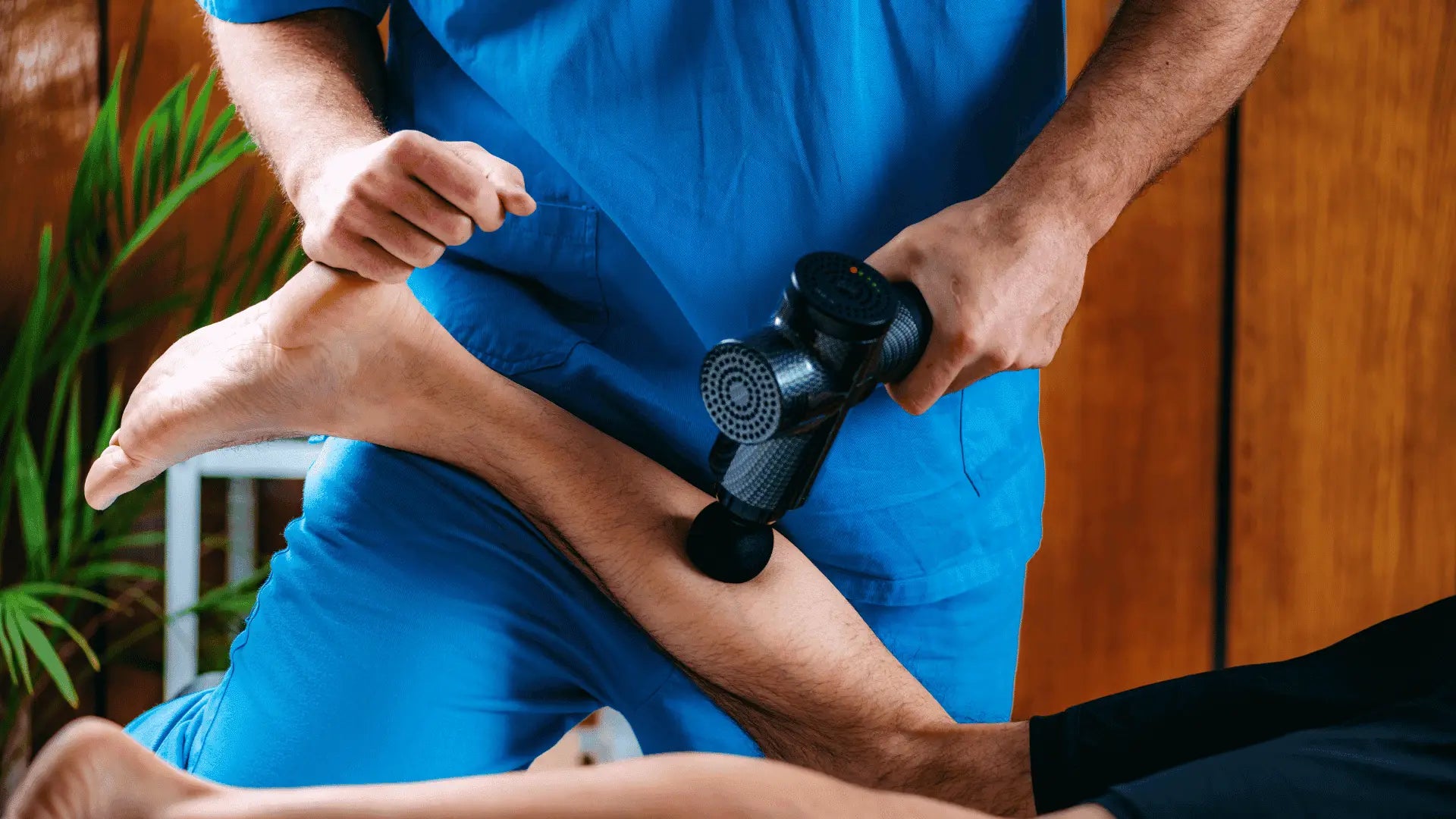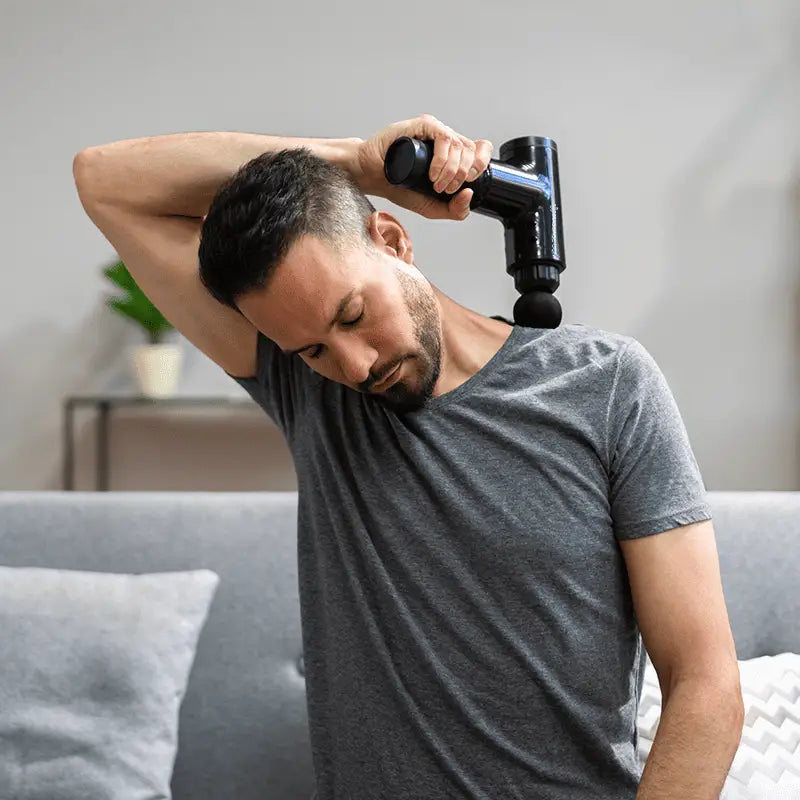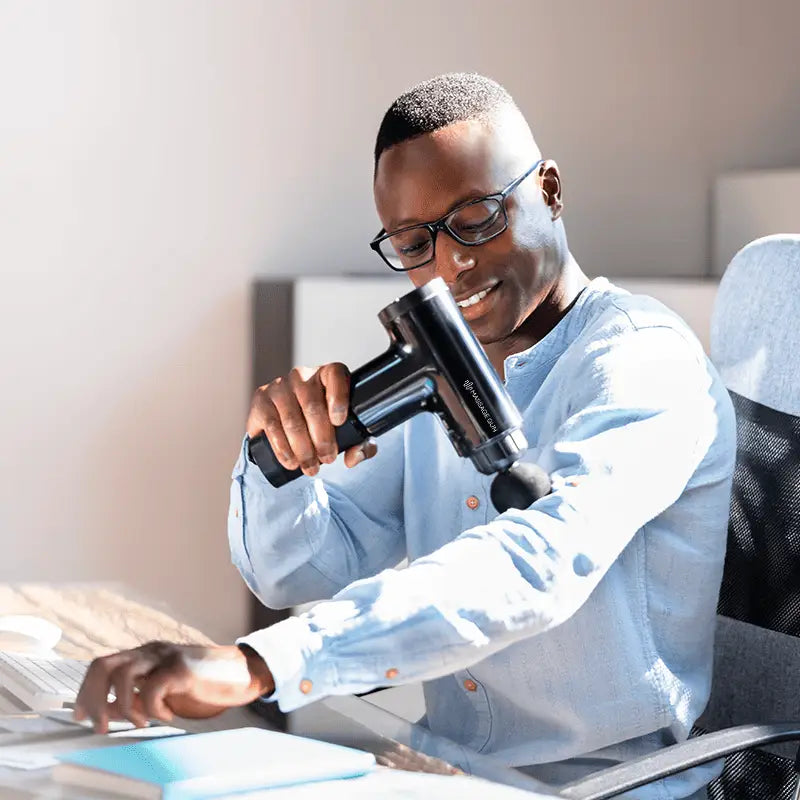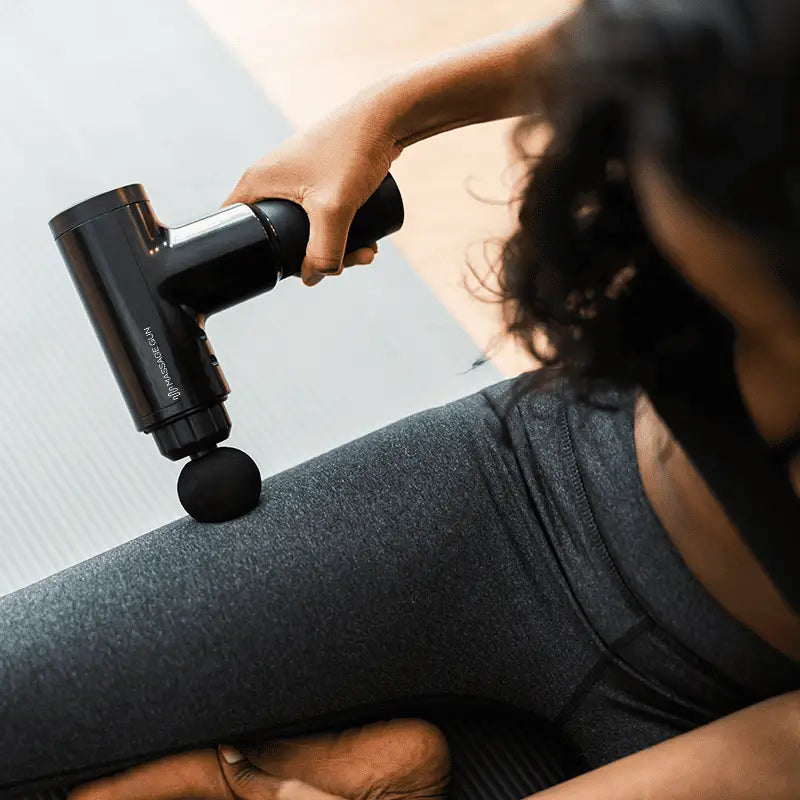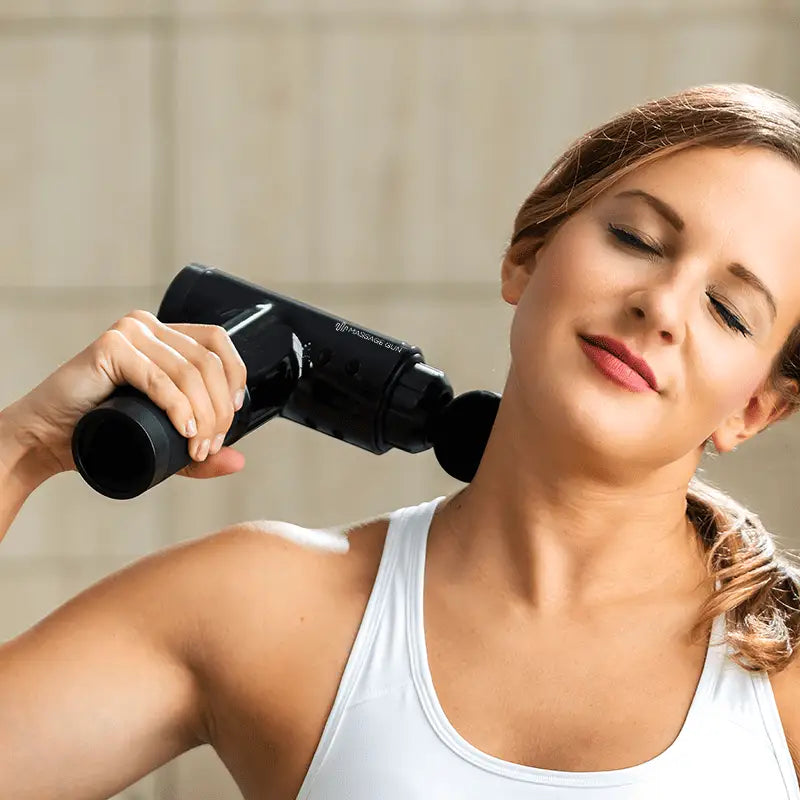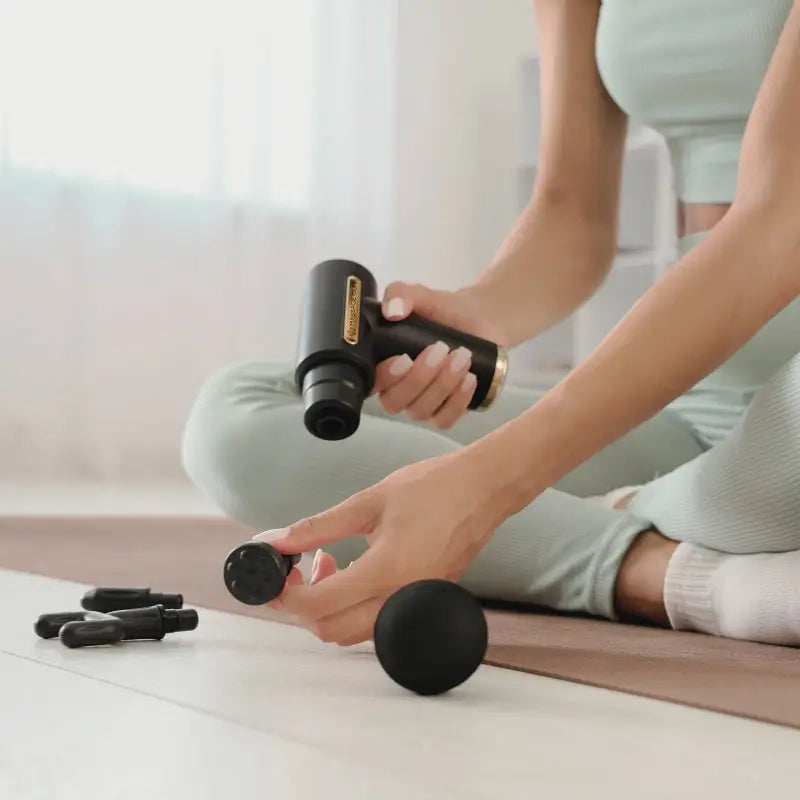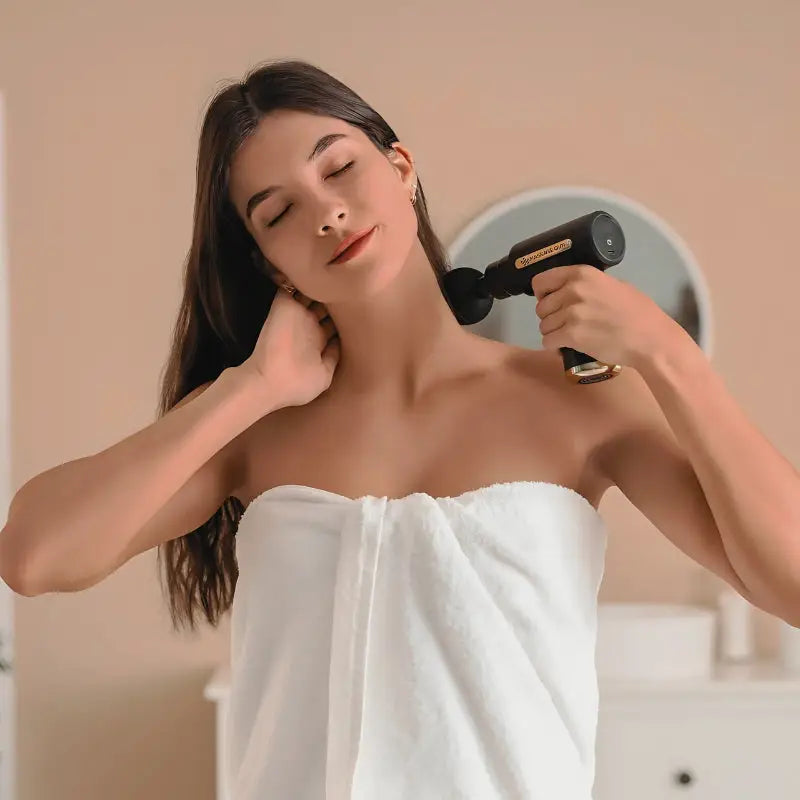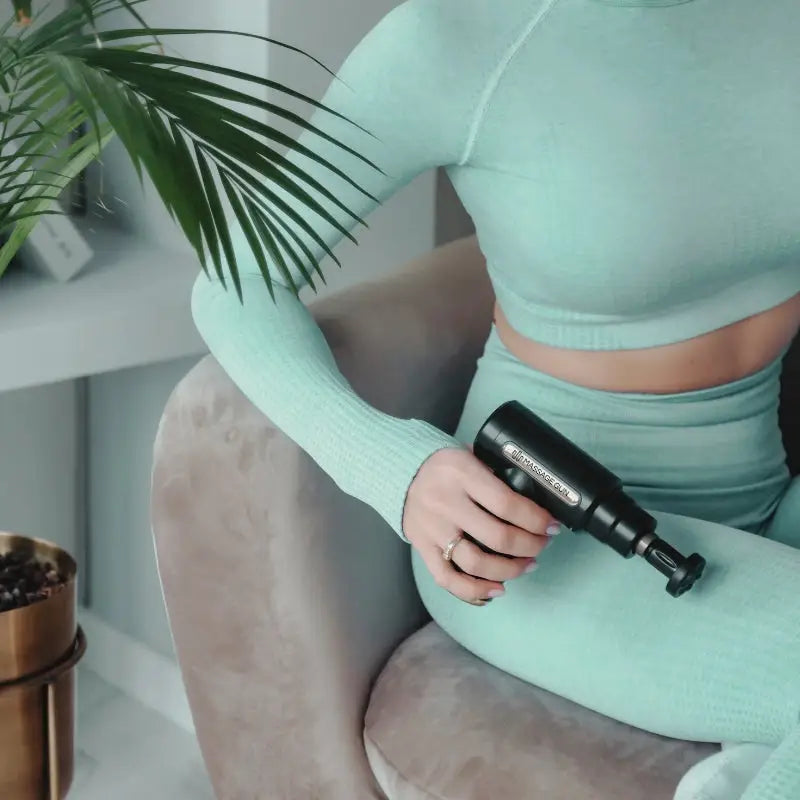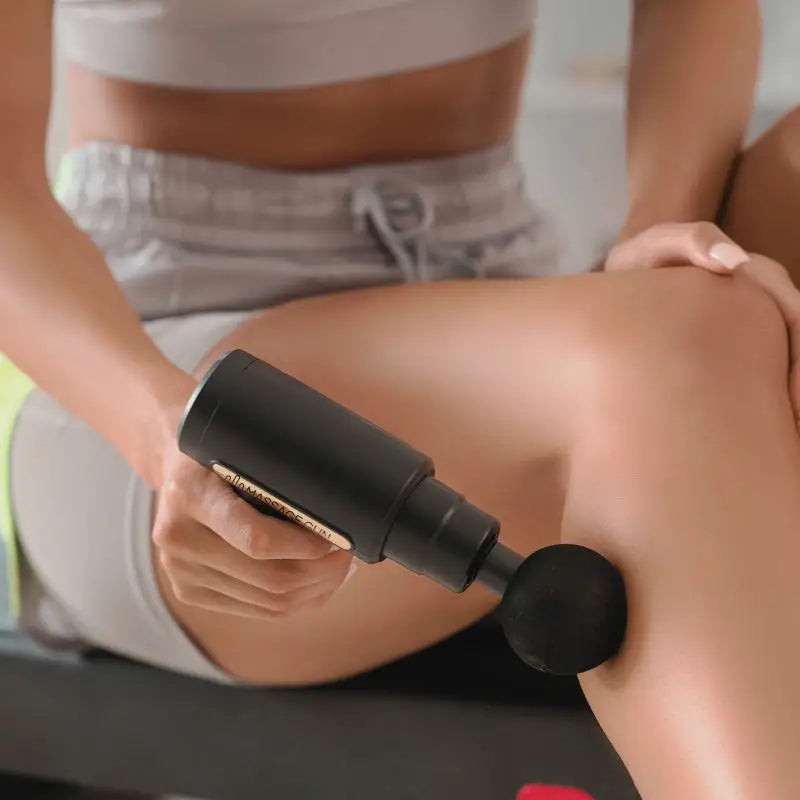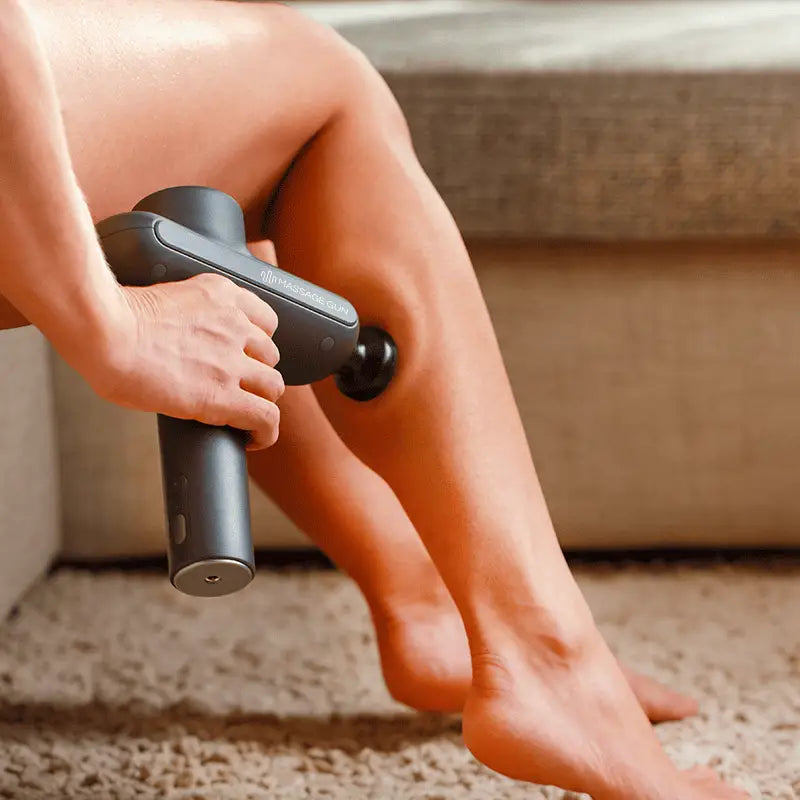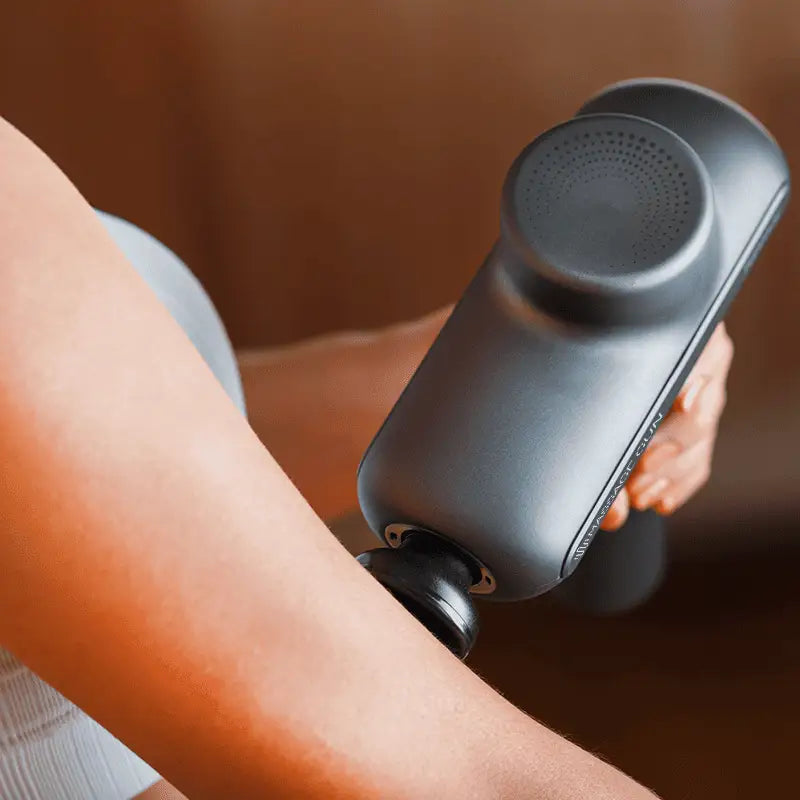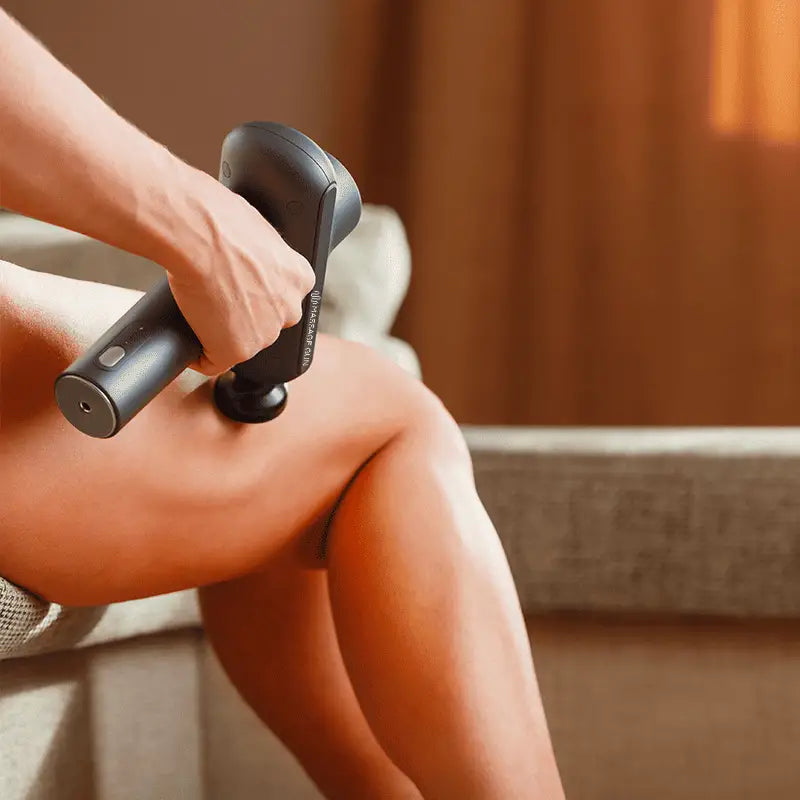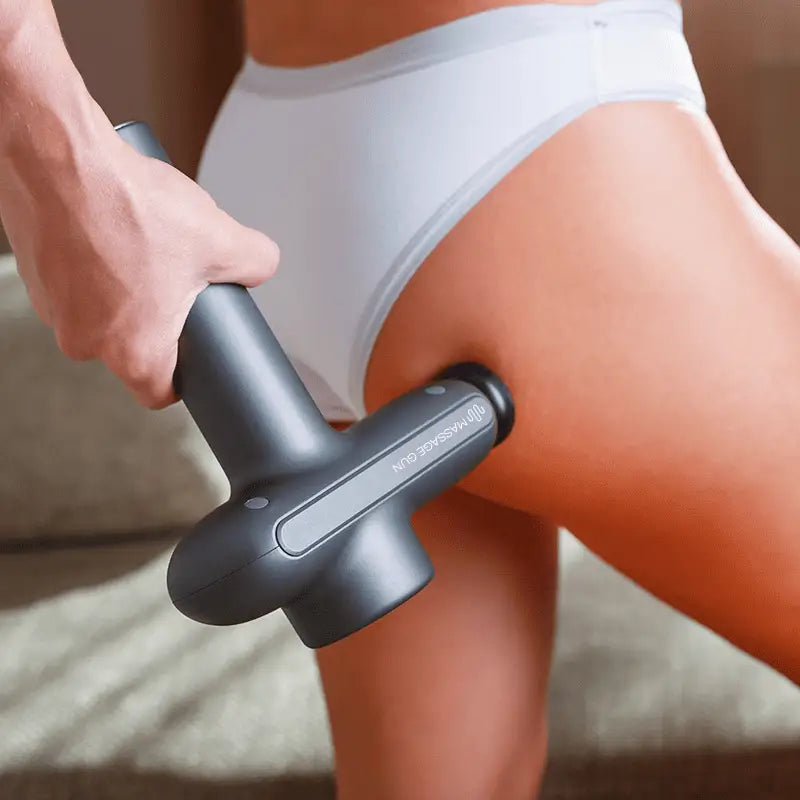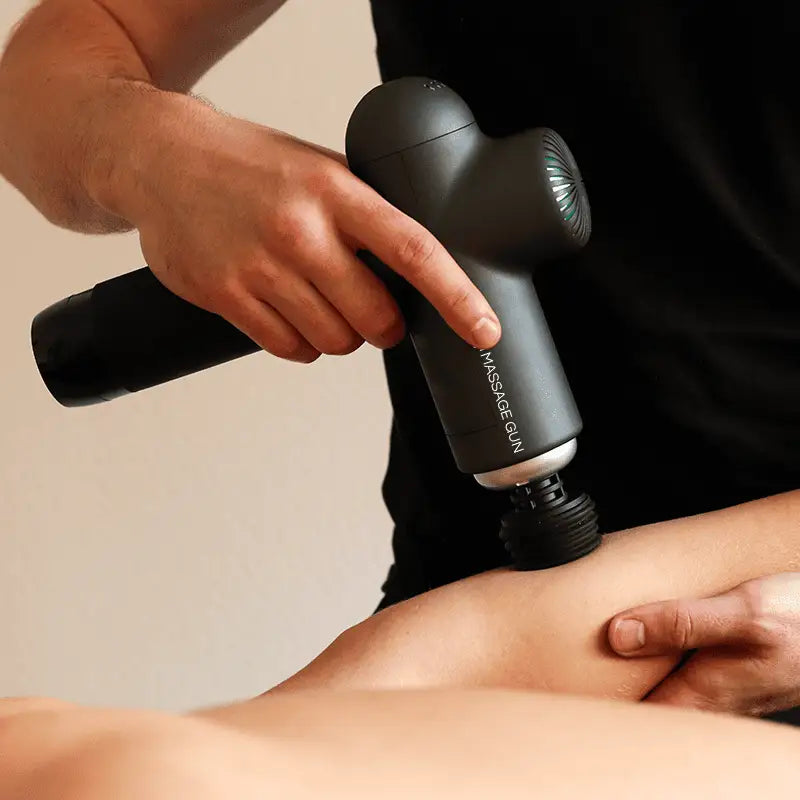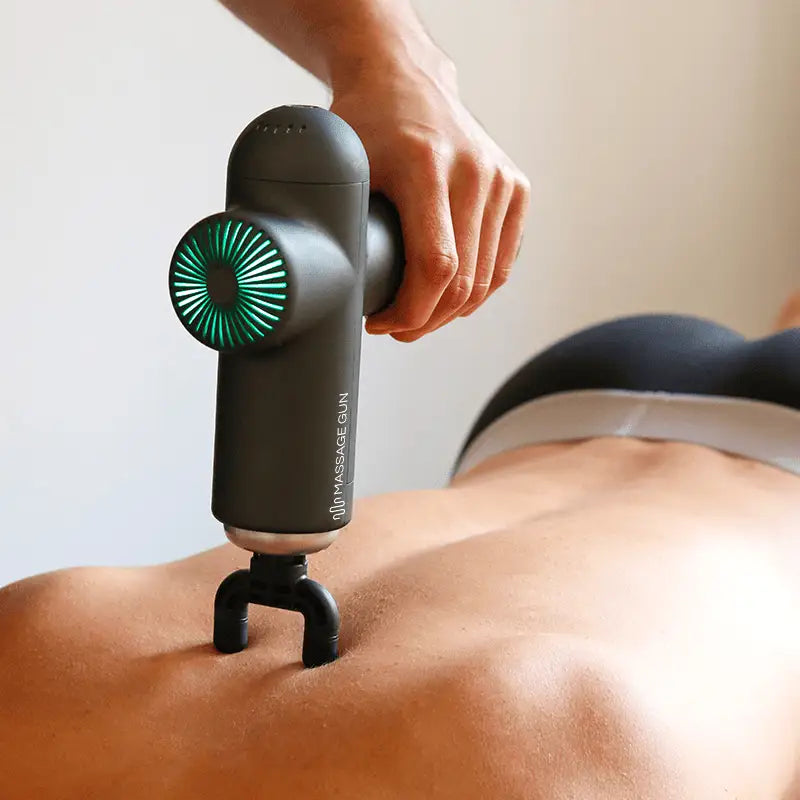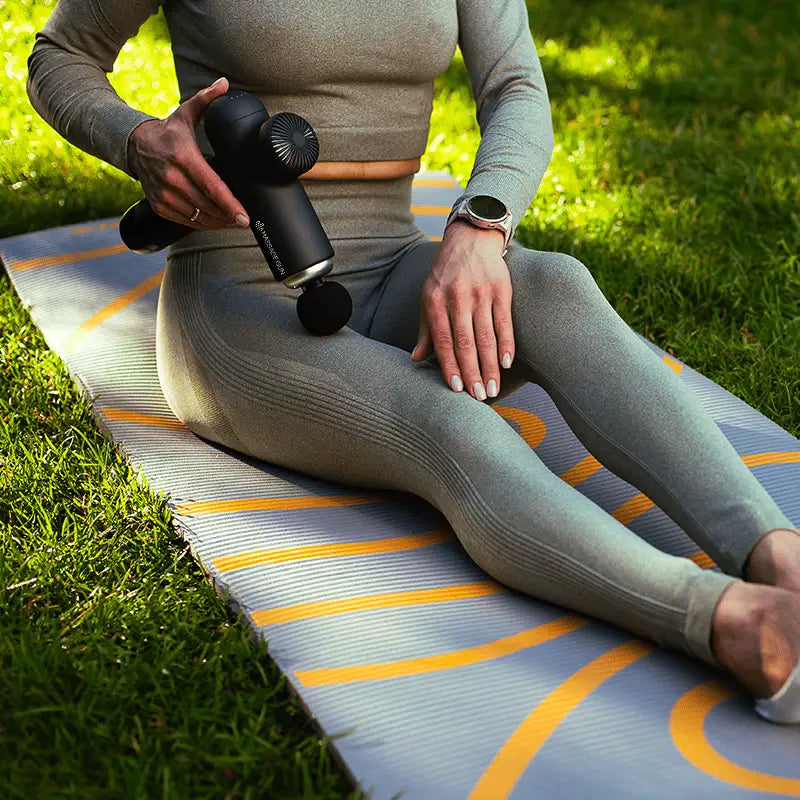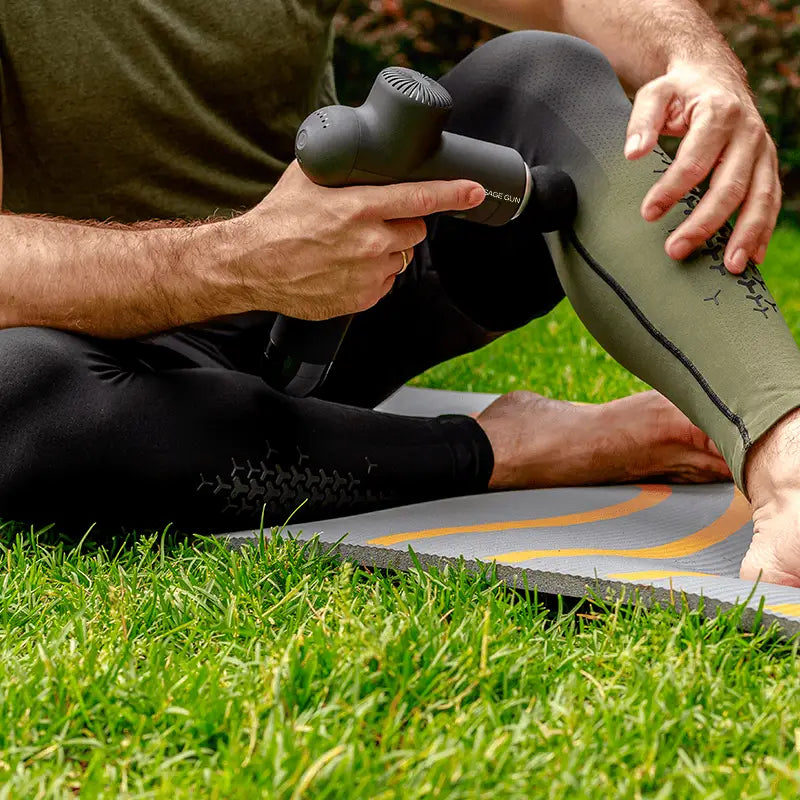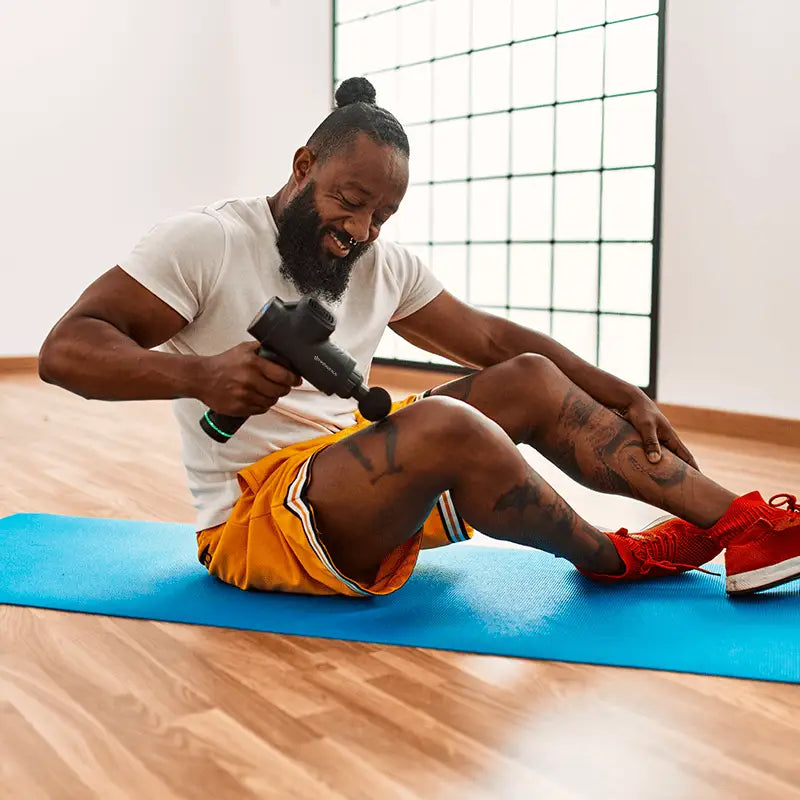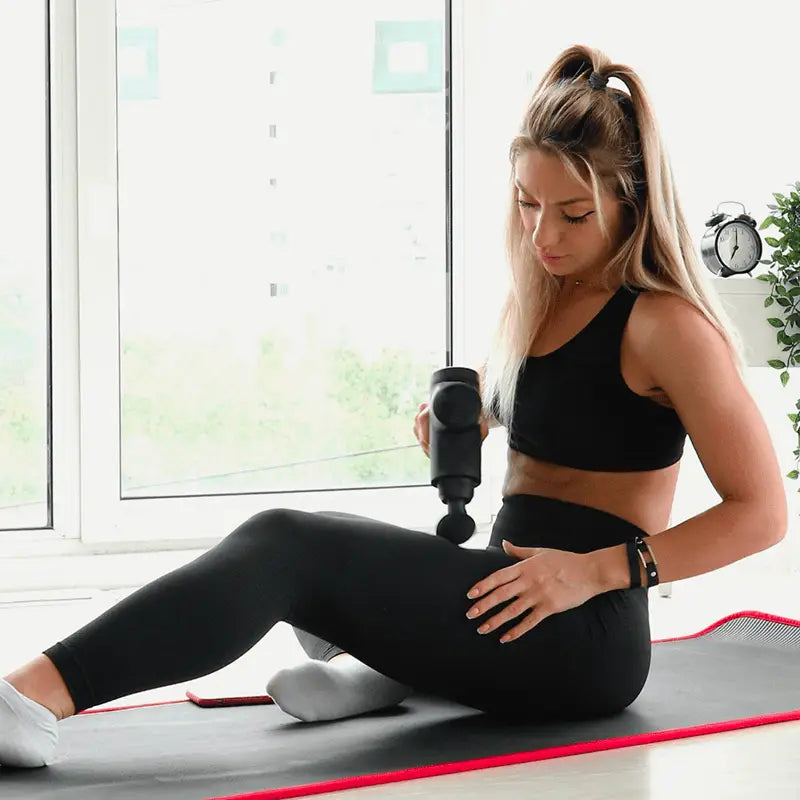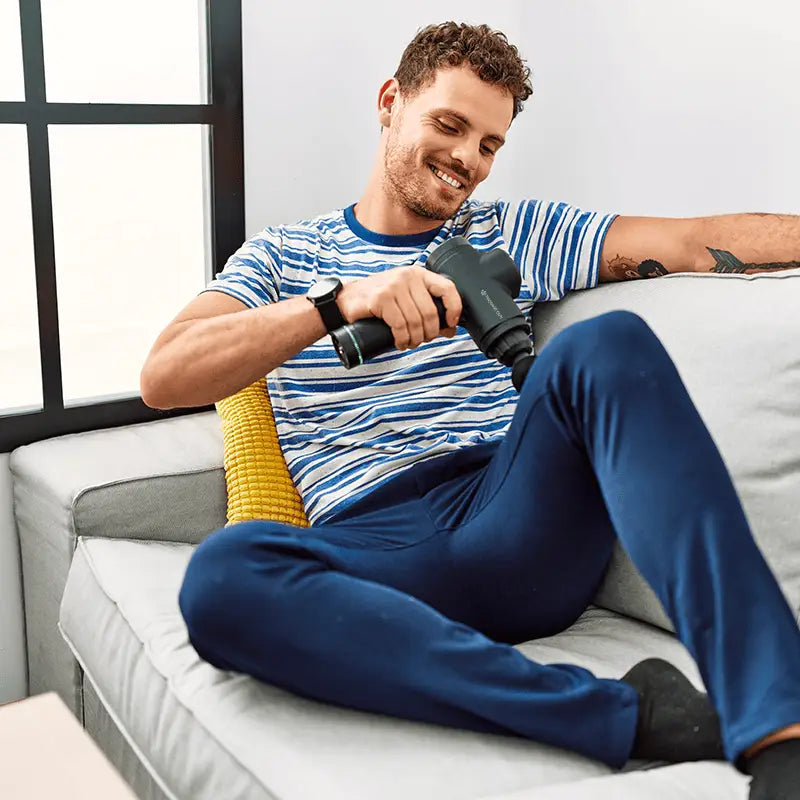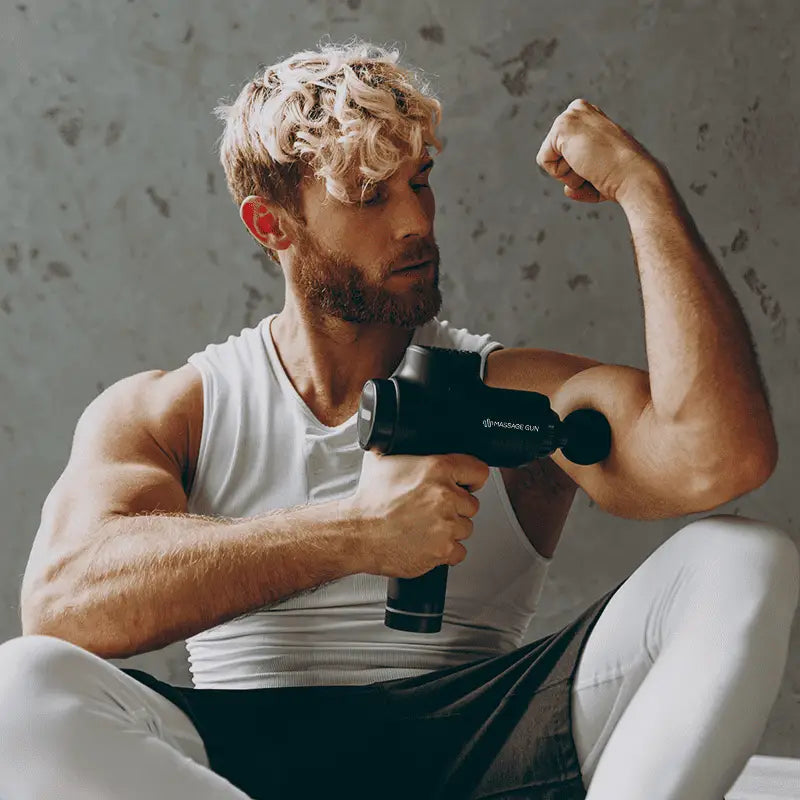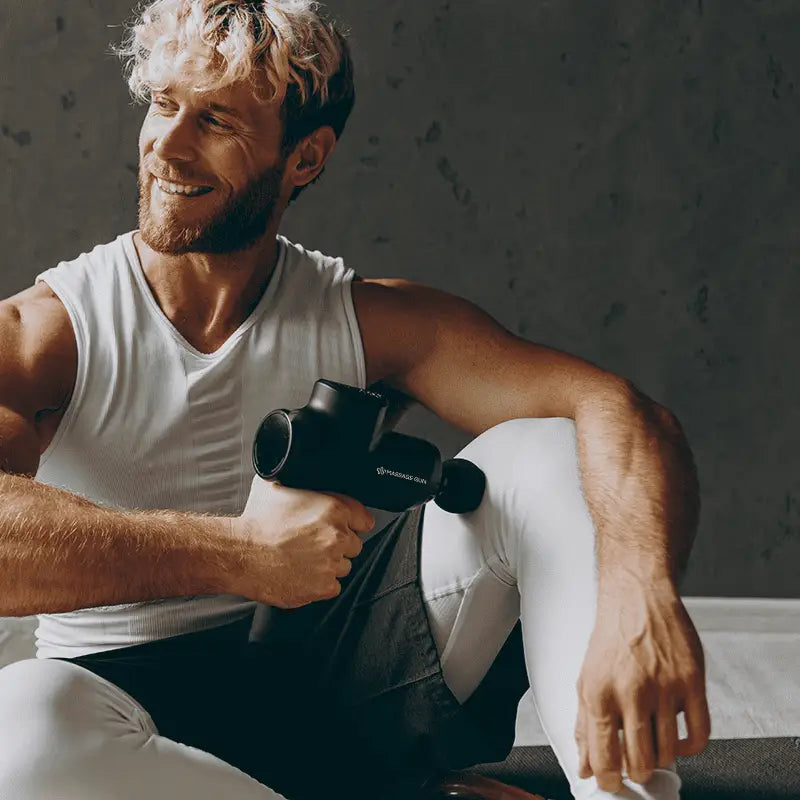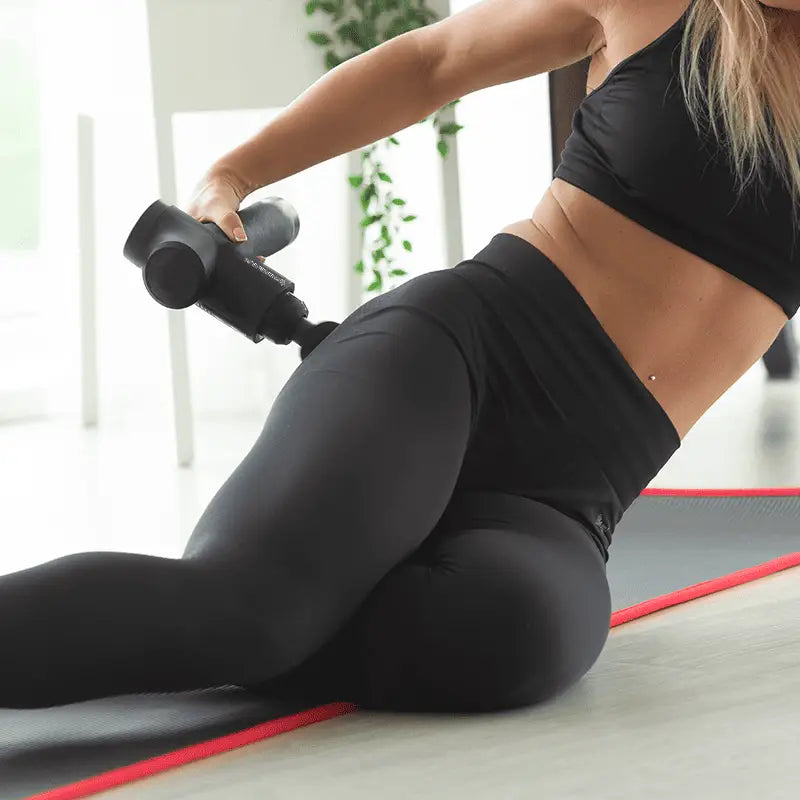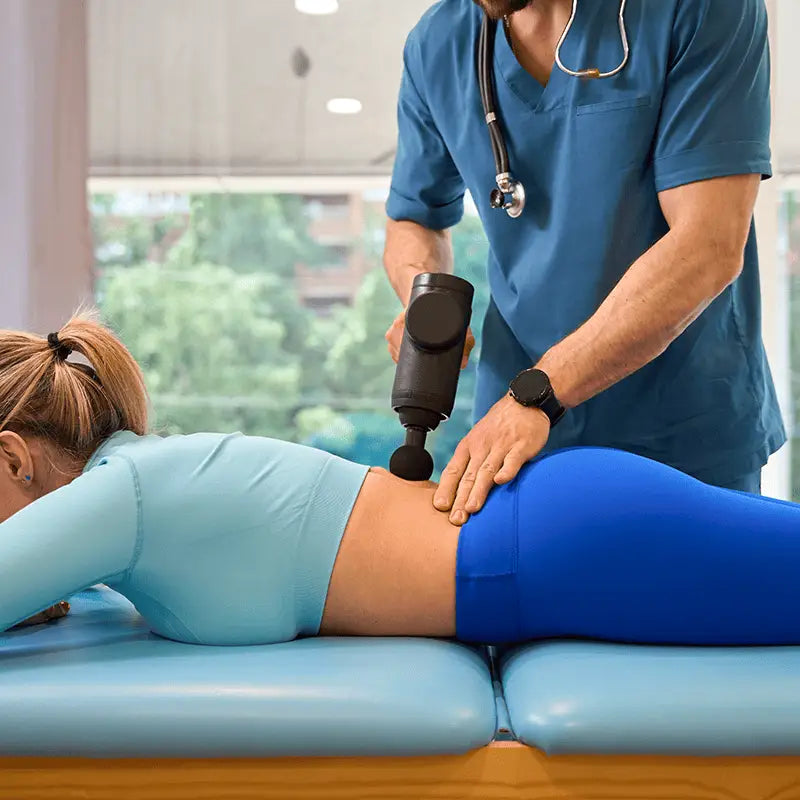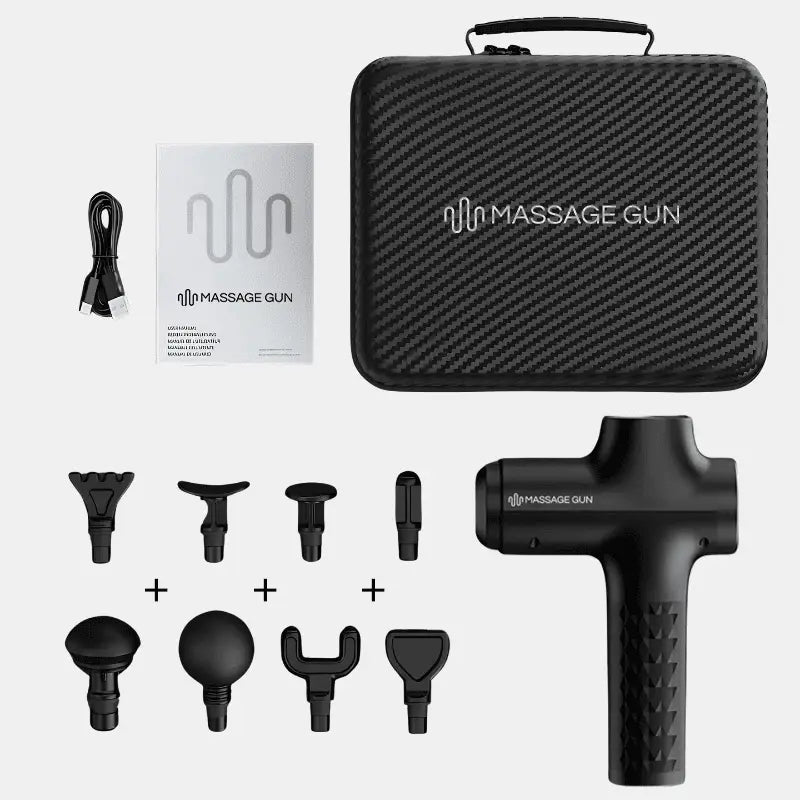The quadriceps, or quads, are a crucial muscle group in your thighs that play a major role in everyday movements like walking, running, and squatting. However, these muscles can often become tight or sore from intense workouts, prolonged sitting, or physical activity.
Using a massage gun on your quads can help reduce muscle tension, improve blood flow, and aid recovery. In this article, we will explore how to use a massage gun properly on your quads, discuss the benefits of massage therapy, and provide a step-by-step guide to help you achieve the best results.
Preparing to massage your quads
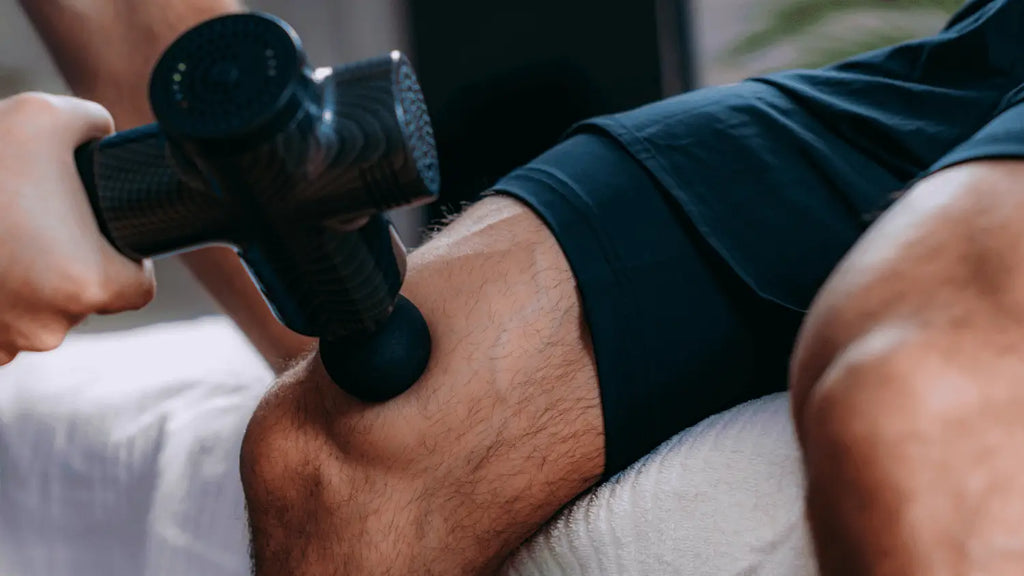
Choosing the right attachment and speed setting
Selecting the correct massage gun attachment is key to targeting the quads effectively. A round or flat head attachment works well for general muscle coverage, while a bullet head is ideal for hitting deeper knots or tight muscles in the quads.
When starting, set your massage gun to a low-speed setting to allow your muscles to adapt to the pressure and vibration therapy. Gradually increase the speed as you become more comfortable. This approach helps avoid muscle soreness and prevents overworking sensitive areas.
Understanding key areas to target
The quads consist of four main muscles: the rectus femoris, vastus lateralis, vastus medialis, and vastus intermedius. To achieve optimal relief, pay special attention to each muscle individually. Place the massage gun on your upper thigh, near your hip, and glide it slowly towards your knee.
Move the device along the muscle fibers, avoiding bony areas like the knee joint to prevent discomfort. Focusing on specific muscle groups ensures you effectively release tension and improve your range of motion.
Step-by-step guide to massaging your quads
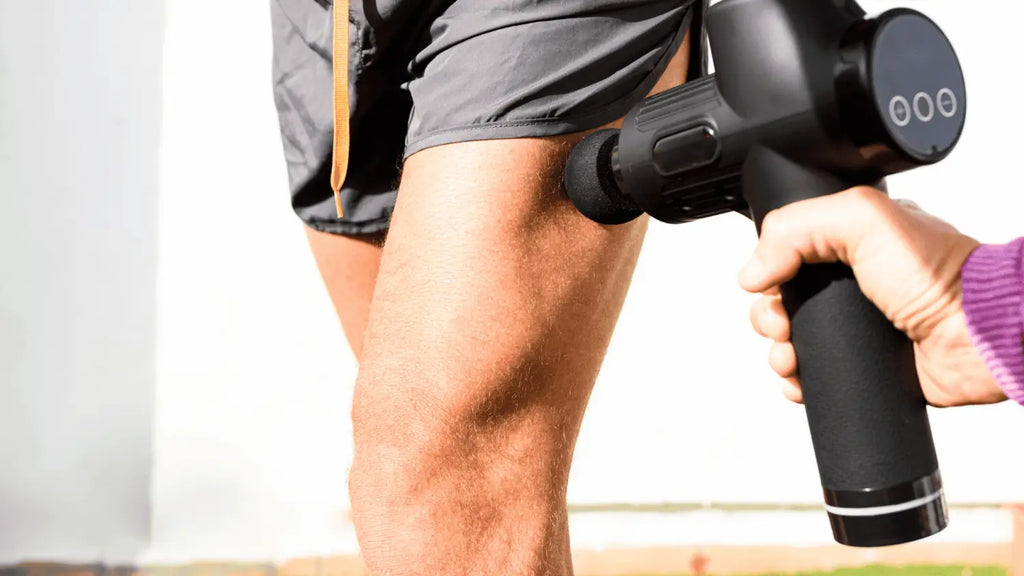
Positioning the massage gun for optimal relief
To get started, sit or lie down in a comfortable position that allows easy access to your quads. Hold the massage gun securely and apply the device to your thigh, just below the hip. Glide the gun down towards your knee, moving in long, slow strokes.
Pay attention to how your muscles feel, and stop to work on any tight areas using small, circular motions. Spend 1-2 minutes on each leg muscle, covering the entire quad for comprehensive relief. Moving the gun along the quads also promotes blood flow and helps reduce muscle fatigue.
Loosening tight areas and knots
For areas that feel particularly tight, use a bullet head attachment to apply more targeted pressure. This attachment is excellent for releasing deep muscle tension and working out knots. Apply gentle pressure and use the gun in small circles to focus on these problem areas.
Make sure not to overwork any specific muscle, and keep an eye on how your body reacts. Listening to your body and using the right technique helps you achieve deep tissue massage results without causing additional pain.
Incorporating additional techniques for deeper relief
If your quads still feel sore or tight, consider combining massage gun therapy with foam rolling or dynamic stretching. Foam rolling can complement percussive therapy by loosening up the fascia around the quads.
Incorporate stretches like lunges or quad stretches to elongate the muscles and improve mobility. Combining these techniques is an effective way to promote overall recovery and enhance flexibility.
Additional tips and aftercare for quad massages
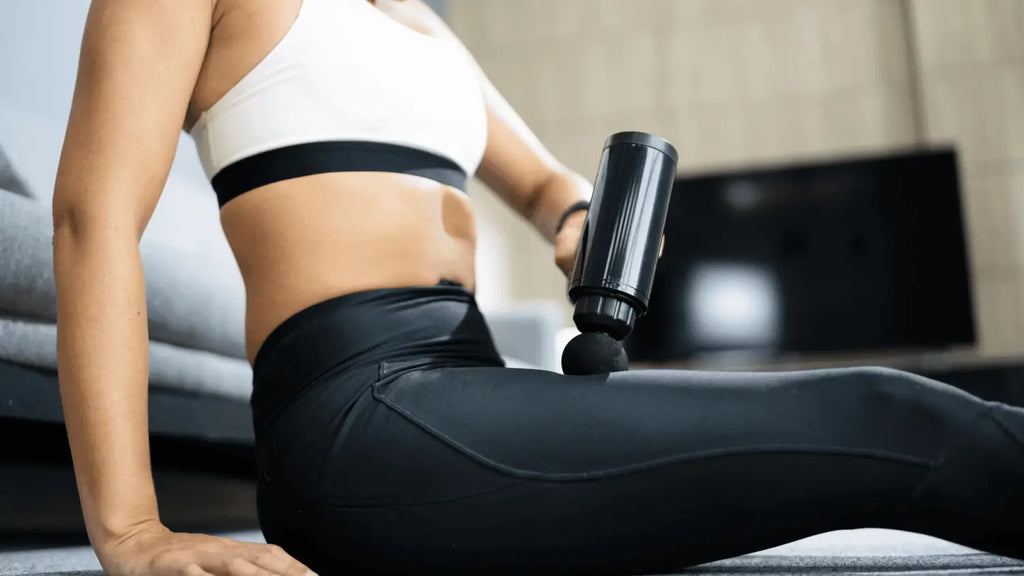
Stretching and flexibility exercises
After using a massage gun on your quads, it’s essential to follow up with stretching exercises to maintain flexibility. Effective stretches include standing quad stretches and lunges, which help prevent tightness and soreness.
Hold each stretch for 20-30 seconds and repeat on both legs to balance your muscle recovery routine. This combination of deep tissue massage and stretching promotes better mobility and reduces muscle tension.
Hydration and rest
Using a massage gun on your legs can increase blood flow and release lactic acid, which builds up during intense workouts. Staying hydrated after a massage gun session is crucial to aiding muscle recovery and flushing out toxins.
Take time to rest your legs and avoid high-intensity activities immediately after a massage. This approach allows your muscles to adapt to the therapy and prevents overstimulation.
Radically new insights to include
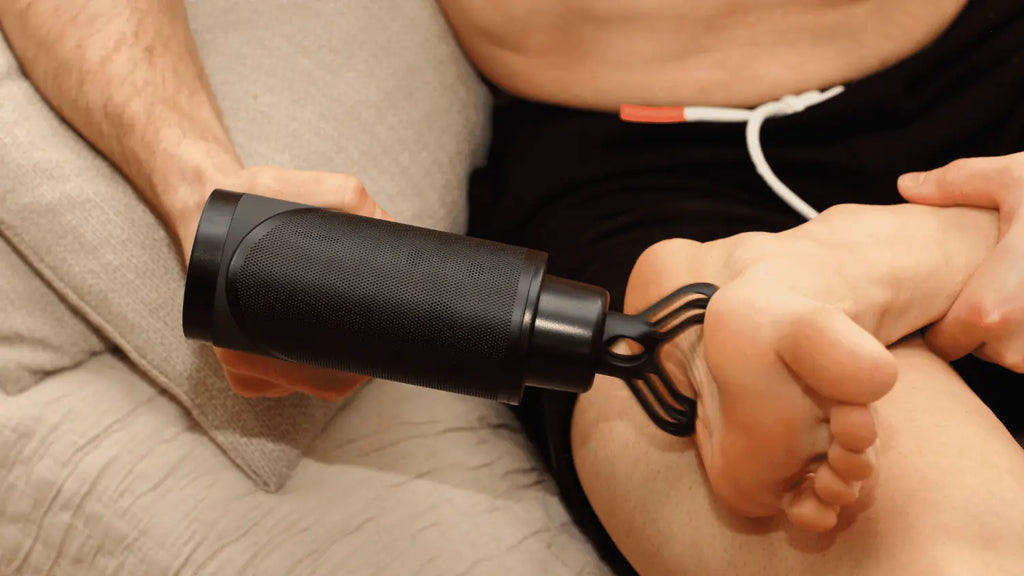
- Advanced techniques for deeper muscle relief: Introduce advanced techniques like cross-fiber massage using a bullet head attachment to target deeper knots and adhesions in the quads. This method isn’t widely discussed by competitors and provides a more effective release.
- Guided massage and stretching routines for quad recovery: Offer downloadable guides or video tutorials that lead users through a structured massage and stretching routine. These guides can be especially helpful for beginners or those recovering from injuries.
- Quieter massage gun models for enhanced relaxation: Recommend quieter models like the Hydragun to create a more relaxing massage experience. Reduced noise levels allow users to focus on relaxation and optimize the benefits of the therapy.
Frequently asked questions
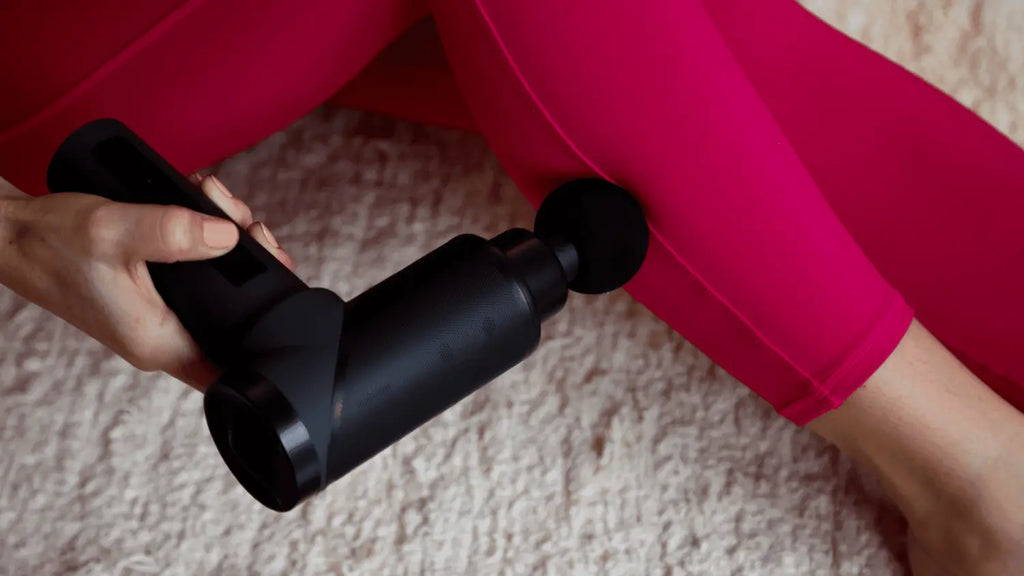
1. How do you use a massage gun on your quads?
To use a massage gun on your quads, start by choosing the appropriate attachment head, such as a round or flat head, which is ideal for covering larger muscle areas. Turn on the massage gun at a low setting and place it on your upper thigh, near your hip.
Slowly glide it down towards the knee, following the direction of the muscle fibers. Avoid applying the gun directly over bones or the knee joint to prevent discomfort. This method helps release tension, improve circulation, and promote muscle recovery.
2. Which massage gun attachment is best for quads?
For quads, the best choice is a round or flat head attachment, which is suitable for broader muscle groups. If you encounter knots or deep tension, switch to a bullet attachment head to target these specific points.
This approach allows you to cover the entire quad while focusing on areas that need more attention. Consulting with a physical therapist can provide guidance on the ideal attachments to use based on your muscle condition.
3. Can a massage gun help relieve quad pain?
Yes, using a massage gun can help relieve quad pain by promoting blood flow, releasing tight fascia, and reducing stiffness. Percussion therapy provided by a massage gun helps improve muscle relaxation and alleviate muscle pain or soreness.
Studies, including those published in the Journal of Sports Medicine, show that regular use of a massage gun can aid in post-workout recovery and prevent injuries.
4. How long should I massage my quads with a massage gun?
Spend about 1-2 minutes on each leg when using a massage gun on your quads. Focus on the main muscles like the rectus femoris, moving from the knee to the hip in long, slow strokes.
If you encounter areas that feel tight or sore, spend an additional 10-20 seconds on these spots. Avoid prolonged pressure in one place to prevent overworking the muscle or causing discomfort.
5. How often should I use a massage gun on my quads?
Use a massage gun on your quads 2-3 times a week to allow your muscles time to recover between sessions. This frequency helps improve circulation, reduce muscle soreness, and maintain flexibility.
If you are experiencing intense soreness, consider consulting with a physical therapist to tailor your routine based on your recovery needs.
6. Can a massage gun improve quad flexibility?
Yes, regular use of a massage gun can help improve quad flexibility by releasing tight muscles and increasing blood flow. This therapy helps break down fascia and enhance mobility in the quads. For best results, combine massage gun therapy with dynamic stretches like lunges or leg swings to further increase your range of motion.
7. Is it safe to use a massage gun on the quads?
Yes, using a massage gun on your quads is safe when done correctly. Avoid applying the massage gun directly over bones or sensitive joints like the knee.
Always listen to your body and start on a low-speed setting, gradually increasing the intensity as your muscles adapt. A systematic review of massage gun safety by Hinge Health indicates that percussive therapy is safe when used as recommended.
8. What are the benefits of using a massage gun on your quads?
The benefits of using a massage gun on your quads include reducing muscle tension, improving circulation, relieving leg pain, and increasing flexibility.
Percussion massage therapy helps release tight muscles, promote post-workout recovery, and improve overall performance. Regular use of a massage gun can also aid in reducing muscle pain, preventing injuries, and enhancing flexibility.
9. Can a massage gun help with muscle recovery in the quads?
Yes, a massage gun can aid muscle recovery by increasing blood flow, reducing lactic acid build-up, and relieving muscle fatigue. Percussive therapy helps accelerate the recovery process by stimulating circulation and promoting the release of tension in sore muscles.
This type of treatment can help prevent injuries and improve overall leg health, especially after intense workouts or sports activities.
10. What exercises should I do after massaging my quads?
After using a massage gun on your quads, perform stretching exercises like standing quad stretches, lunges, and dynamic movements to maintain flexibility and reduce tension.
Strengthening exercises such as squats and leg extensions are also beneficial for stabilizing your quads and preventing imbalances. For more comprehensive care, include hamstring and calf stretches to cover the entire leg.


